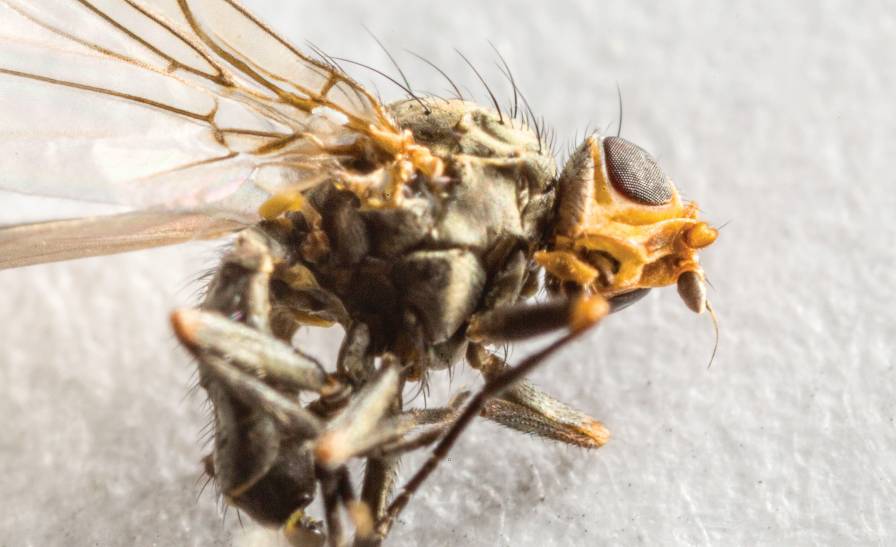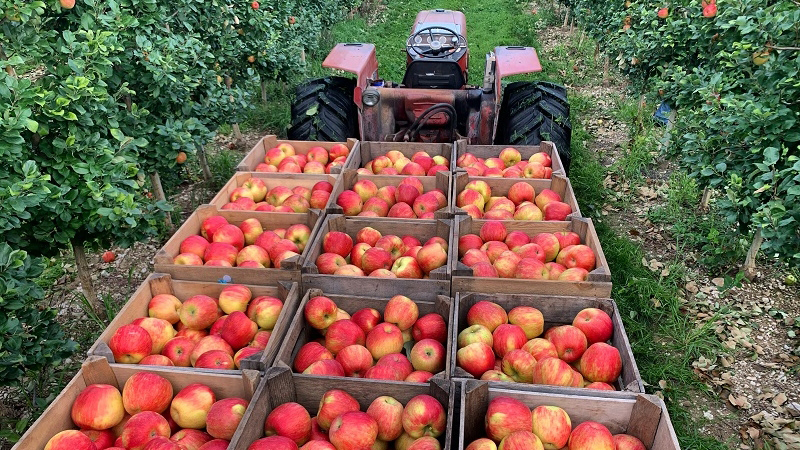How To Control Allium Leafminer, A New Invasive Pest

Photo credit: N. Sloff, Dept. of Entomology, Penn State
The allium leafminer, also known as the onion leafminer, was first spotted in Lancaster County, PA, in December 2015, making it the first confirmed infestation in the western hemisphere. The pest was seen targeting onions, leeks, garlic, chives, shallots, as well as green onions, with leeks being described as the most damaged host.
Shelby Fleischer, Professor of Entomology at the University of Pennsylvania, discusses the symptoms of infestation, how to identify the newly spotted pest, and control measures.
Damage Symptoms
One of the first symptoms you will notice on plants is wavy, curly, and distorted leaves, which Fleischer says may be mistaken for damage from herbicide residue. However, upon closer inspection, you will be able to see puncture marks along the sides of the leaves toward the distal end.
“This is something the female does with their ovipositor, so both females and males can feed on the plant exudates,” he explains.
The fly larvae mine the plant leaves and move toward the bulb and leaf sheaths where they pupate. Exactly where they pupate in the plant may vary depending on bulb and leaf size, Fleischer says. To check for larvae, the plants must be pulled out of the ground and the leaves pulled back.
Damage from feeding can create entry routes for bacterial and fungal pathogens, and Fleischer has already seen bacterial rot brought in on several specimens.
Spotting the adult flies is harder due to the fact they are small and fly fast. “Seeing the damage is the first symptom; next you look at the leaves for puncture wounds; and then finally, you peel back the leaves to look for pupae,” he explains.
Identification
Adult allium leafminers are less than 3 millimeters (mm) in length, are grey or black in color, have a distinctive yellow or orange patch on the top and front of their heads, and have yellow “knees.” Yellow also can be seen on the sides of the adult fly’s abdomen, and the wings are situated horizontally over the abdomen when at rest.
The eggs are white, tiny (only 1/2 mm long), and slightly curved. The larvae are white, cream, or yellowish in color, are headless, and up to 8 mm long at their final instar. The pupae are dark brown, 3.5 mm long, with a pair of posterior spiracles with 18 to 20 bulbs per spiracle.
There are an estimated 1,090 degree days from egg-to-adult development using a 41.2°F threshold, or 1,225 degree days using a 37.8°F threshold.
Monitoring And Behavior
The allium leafminer overwinters as pupae in plant tissue or in surrounding soils and emerge as adults in late winter into spring.
Because the pest is new to the U.S., most information on its life cycle has been gathered from Europe. According to Fleischer, current research indicates the pest has a pretty distinct flight pattern early on in the season beginning from March until the beginning of May, where all flight activity stops.
“Another series of flight activity starts up later, but exactly how much later we don’t know yet. The flight timing may influence which crops get damaged. But with some luck, hopefully flights will wait until September,” Fleischer explains.
Using yellow sticky traps also has been effective in trapping adults and monitoring flight patterns, he says.
Management
One of the first ways Fleischer suggests protecting your crop from allium leafminer is to time your plantings to avoid emergence, flight activity, and adult oviposition. If you’ve successfully assessed flight timing, using row covers during flight time also may be used as a control measure.
For chemical control, systemic and contact insecticides can be used as long as they are labeled for use on allium crops. Products labeled for leafminers that may be effective on allium crops include Aza-Direct (Gowan), TriGard (Syngenta), Scorpion (Gowan), Warrior II (Syngenta), and Radiant (Dow AgroSciences), among others.










